Oppo A5 2020 Review
Oppo A5 2020 Review
A great affordable Android
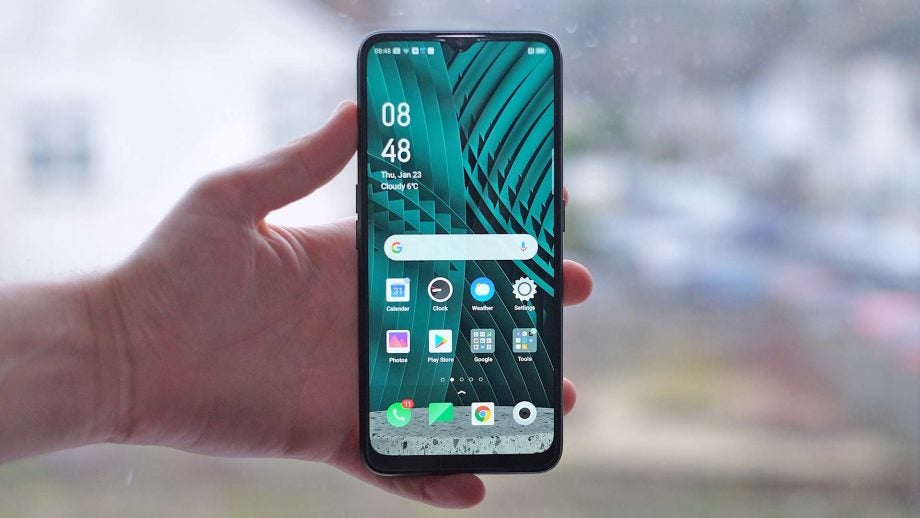
Verdict
The Oppo A5 2020 is just the kind of phone I end up recommending most often to friends. Its cost is low enough to make a SIM-free buy perfectly reasonable, it looks good and should have the CPU power, RAM and battery capacity to make use headache-free.
Pros
- Big battery
- Big screen
- Sensible price
- Smart looks
Cons
- 720p screen
- Plastic back
Key Specifications
- Review Price: £179
- 6.5-inch 1600 x 720 pixel LCD screen
- Snapdragon 665 CPU
- 3GB RAM
- 64GB storage
- 12/8/2/2MP rear cameras
- 8MP front camera
- 5000mAh battery
- Android 9 with ColosOS 6
The Oppo A5 2020 is a cheap phone dressed up as an expensive one. Its back looks like glass (it isn’t), the phone has four rear cameras and a screen as big as those some of the most expensive phones in the world.
It’s like a Moto G8 Plus, just better or worse in a few respects. Battery life is a highlight, but the most picky may take issue with the relatively low-resolution screen.
The Oppo A5 2020 costs £179 SIM-free, and is available for free on some affordable contracts.
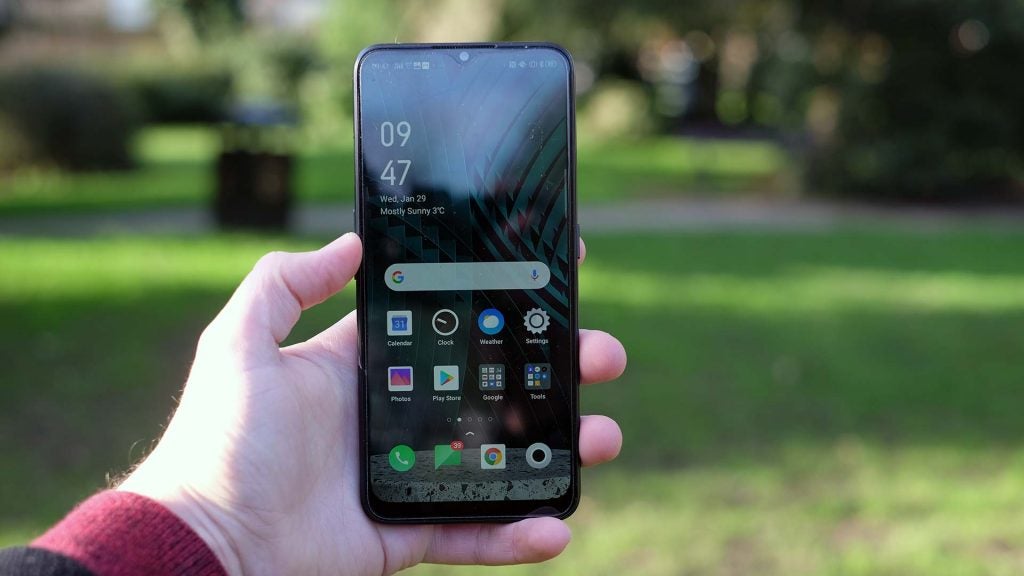
Design
To look at the Oppo A5 2020 and to play with it first-hand are different experiences. From arm’s length it looks quite similar to the OnePlus 6T. The curved back is a spit for glass, and there’s no giveaway sign this is a “cheap” mobile even in finer elements like the camera surround.
Well, aside from its use of a rear finger scanner pad, no longer seen in truly expensive phones.
Pick the Oppo A5 2020 up and the situation changes a bit. The back is plastic and the phone is relatively thick, 9.1mm.
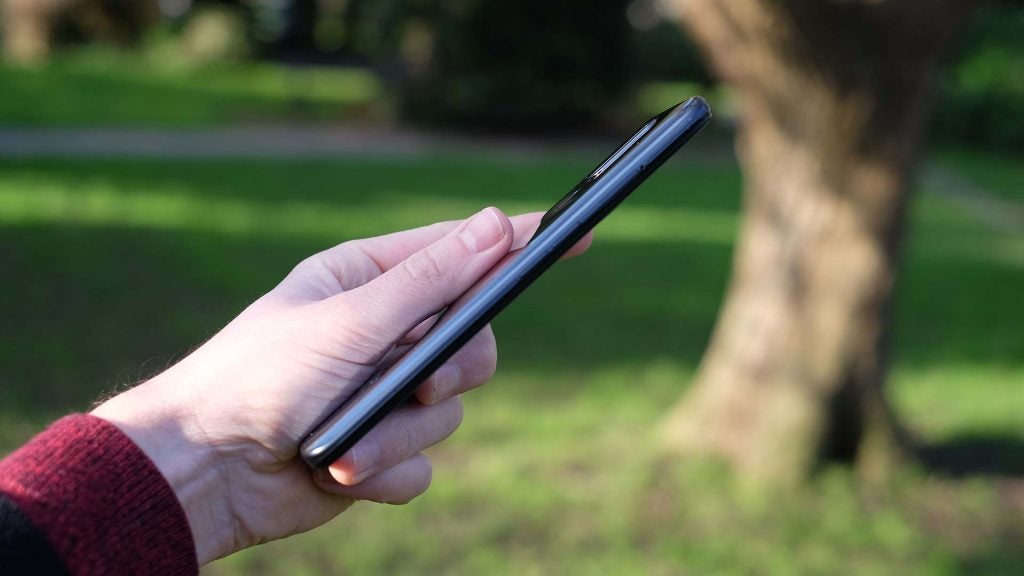
However, glass backs in sub-£200 phones are becoming rarer as prices creep upwards slowly. The Oppo A5 2020 also has the best possible excuse for its thick frame. Oppo chose to give it a plus-size battery rather than keep a millimetre off.
Both of these points melt away if you use the included case anyway. The Oppo A5 2020 comes with a basic transparent silicone case, like other cheap Oppos, and has a factory-applied screen protector.
You have to be pretty unfortunate or careless to damage your A5 2020 on day one.
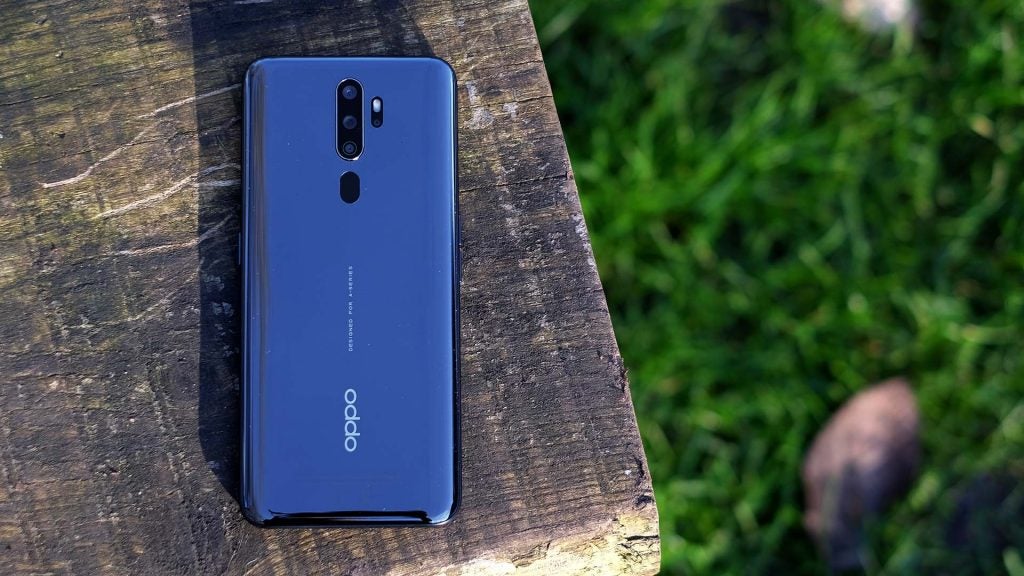
Size is one of the main reasons not to buy this phone, though. I used the Samsung Galaxy A90 5G before the Oppo, so my hands were ready for another large mobile. But if you like a smaller handset, this is the wrong phone to buy. It’s wider than the Samsung Galaxy Note 10, before you add the bulk of the case.
There are no other major annoyances to the Oppo A5 2020’s hardware. It has a 3.5mm headphone jack, the rear fingerprint pad is faster and more reliable than a lot of the in-screen scanners I’ve used over the last three months. You get NFC, sometimes missing from cheaper phones, the 64GB storage is enough for most people, and if it isn’t you can add a microSD card to the SIM tray.
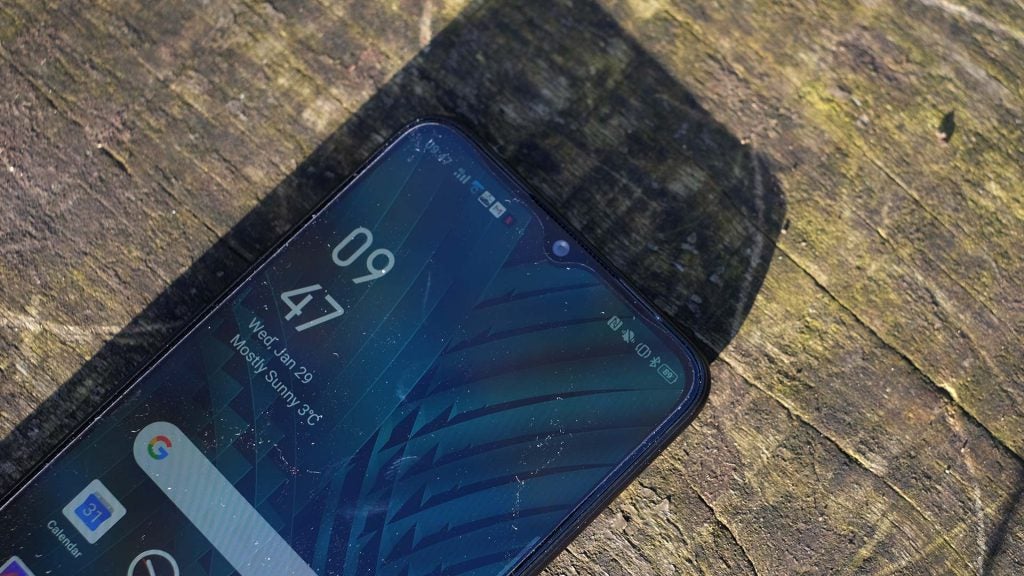
Even its speakers impress. They are loud, and both robust-sounding and low on distortion at high volume for an affordable phone. It’s a major benefit if you like to listen to podcasts through your phone while cooking or in the shower.
These are stereo speakers too. There’s one above the display, another in the conventional spot on the bottom.
The Oppo A5 2020 has no official water resistance. You can find YouTube videos of the phone being submerged for a short period, though, and they suggest it is well constructed enough to avoid a quick accidental dunk ending too badly.
Screen
The Oppo A5 2020’s display is large and tall. This is a 20:9 6.5-inch aspect screen, close to the once eyebrow-raising shape of Sony phones like the Xperia 10.
It can fit in a lot of icons, or article text, before you need to start scrolling. The teardrop notch is pleasant too, using a swooping cut-out rather than the abrupt circle of the Moto G8 Plus.
Big screens like this are great for games and video, and this is only partially limited by the price-cut tech underneath.
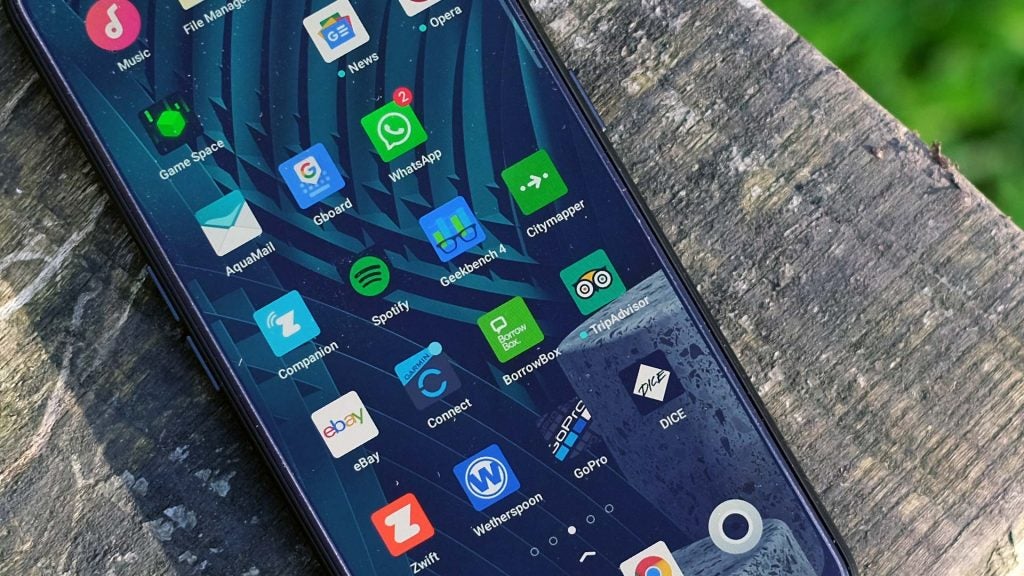
The Oppo A5 2020 display is of 1600 x 720 pixel resolution. It is not ultra-sharp and, switching from a 1080p phone, the softer character to text in particular is noticeable.
Colour is not notably bold or rich either. It’s similar to the “natural” or “neutral” setting you might find on a more expensive phone, and there’s no way to jack it up if you want a bolder appearance. The Oppo A5 2020 does not have a “vivid” mode.
You only have control over the colour temperature. A slider lets you make the screen warmer or cooler. This is standard stuff for an affordable phone, although nowadays the Moto G8 Plus is only slightly more expensive and it has a sharper 1080p screen.
This is one of the few barriers to recommending the Oppo A5 2020. The screen is far from bad, but you do not have to may significantly more to get better hardware.
Software
The Oppo A5 2020 currently runs Android 9 and Oppo’s ColorOS 6 interface. This is not the latest version of Android, or the prettiest custom skin.
I started using Oppo phones regularly last year when its distribution finally reached full speed in the UK. My first impression ColorOS was of a certain stiffness, mostly caused by its use of square, fairly sharp icons.
I still think ColorOS is not that much of a looker. But a handful of phones in, I like it well enough. Don’t be too put off, in other words. There’s also less to get in the way, and fewer incongruous parts, than in LG and HTC’s Android skins.
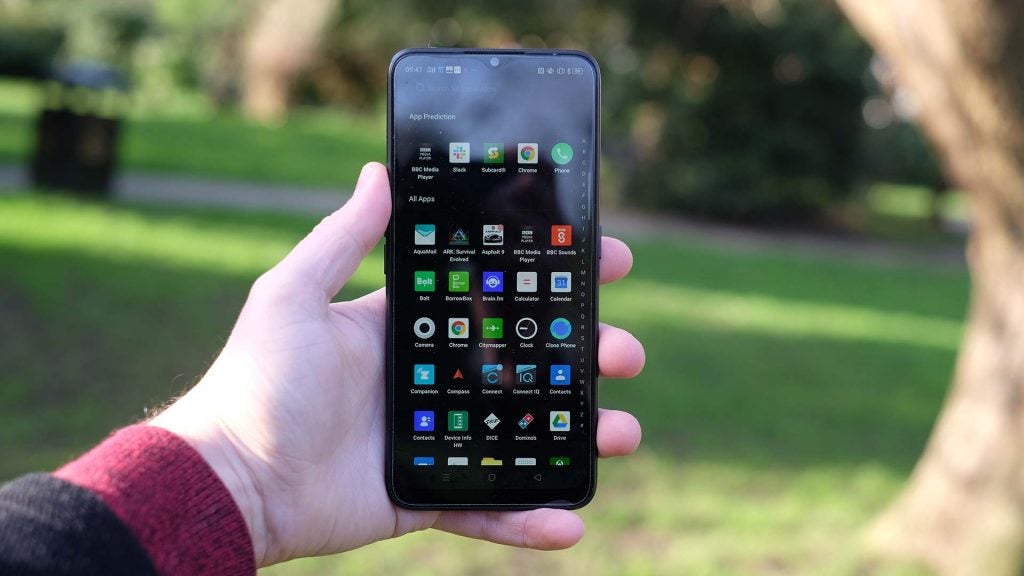
There’s an apps drawer, a vertical scroll similar to that of standard Android. And if you prefer a drawer-free experience more like that of an iPhone, you can have it. Customisations like this and choosing how many rows and columns of icons sit on the home screen are available.
The two obvious extra parts are the Smart Assistant home screen and the one-handed aid. Smart Assistant is effectively a scroll of curated widgets. I don’t find it useful, like every single one of these extra home screens, but it is a quick way to check your step count, the weather and the day’s calendar events.
Oppo’s one-handed UI aid is a little box that appears when you flick from the side of the screen in a specific area (marked with a little translucent patch). The panel is home to shortcuts you select, letting you run apps with fewer swipes and less thumb stretching. I haven’t used it once. But given several manufacturers add this, someone must be.
Performance
The Oppo A5 2020 has the same CPU as the Oppo A9 2020, a Snapdragon 665. This is an eight-core processor with four Kryo 260 Gold cores and four Kryo 260 Silvers. The Moto G8 Plus uses the same CPU too, telling you this is the budget Qualcomm processor of the moment. It has 3GB RAM.
General performance is perfectly good. In the move from the Samsung Galaxy A90 5G to this phone, I have noticed apps take a little longer to load, and there’s occasionally a little pause before the settings menu pops up. But after three days, I honestly stop noticing the minor change of pace.
There’s no grating lag, certainly nothing that will remotely make you wish you paid three times the price and bought something higher-end.
Gaming is limited in the typical manner for a good budget Android. You can play any game you like, but some will only let you use lower graphics settings, or will run jerkily at the higher ones.
Ark: Survival Evolved and PUBG will only run on low graphics, for example. However, both games still look good at this setting (remember to max out the resolution slider in Ark for the cleanest look) and run well. Asphalt 9 seems susceptible to occasional obvious jerkiness, but it’s likely because the game’s wacky style means the amount the phone has to render can vary wildly from second to second.
Camera
The Oppo A5 2020 has five cameras, four on the back and one on the front. Oppo is aggressive in its use of multiple sensors and lenses, in part because it looks good on paper, and on the phone itself.
My issue is the very same I had with the Oppo Reno 2Z and A9 2020. Two of the rear cameras have such low-end hardware they have very little meaningful impact on the photos you take.
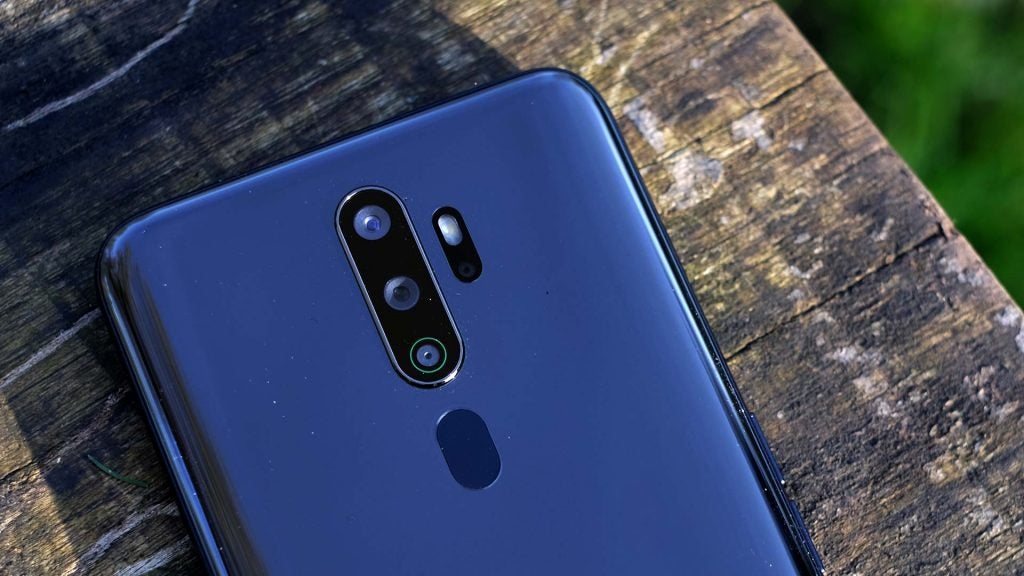
The Oppo A5 2020’s primary cameras are 12-megapixel 1/2.8-inch sensor with f/1.8 lens and an 8-megapixel ultra-wide with a 1/4-inch sensor. It’s B-grade hardware for the main module, C-grade stuff for the second, and that’s perfectly fine in a phone at this level.
Our two other cameras have tiny 1/5-inch 2MP sensors and lens apertures so tiny you could barely fit a pin through them. They are here, according to Oppo, for black and white and depth photography, which means one of the cameras helps construct a depth map for portrait images in which the background is blurred. And the B&W camera may be used for the black and white filter mode – there seems to be little difference whether the 2MP cameras are covered or not in the final results.
The Oppo A5 2020 just doesn’t seem to need the extra hardware, and a standard 2-megapixel camera sensor is arguably not good enough to create a particularly good depth map of a scene anyway.
Moans out of the way, how is image quality?
It’s typical of one of the most accomplished budget phones. The Oppo A5 2020 has a very effective Auto HDR mode that makes the camera much less picky about the lighting in a scene. Day lit scenes with moderate light contrast tend to look rich, punchy and detailed.
The Oppo A5 2020 only really struggles with the extremes. Night images are passable for a budget phone, but look much softer and less detailed than a good higher-end camera with optical stabilisation or one of the better, “trendy” ultra-low light modes designed to radically improve handheld low-light shots.
You can see the camera’s limits in some scenes of very high light contrast too. While the auto HDR is excellent for sheer shadow detail lifting, there’s occasionally some discolouration of the darkest and lightest areas. Areas in the sky might take on a green tint, or darker parts a purple one. And the detail lifted out of the shadows is not as clean as that of a top-end camera.
This camera sensor seems of good quality, but is not a match for the Google Pixel 3a’s. Its specs aren’t either. Oppo has not told us the exact sensor chip used, but it has 1.25 micron sensor pixels to the Pixel’s 1.4 micron ones. Smaller photosites mean lower native sensitivity.
There is a also a difference in image quality between the primary camera and the ultra-wide. Your ultra-wide images will tend to look softer, lower in contrast and have poorer texture detail. The lens aperture is relatively narrow too, at f/2.3. However, it is unrealistic to expect Oppo to be able to match sensor quality at this price and I’m mostly just grateful for the extra field of view.
The wide also takes perfectly good images in daylight, a real benefit for holiday snaps and shooting large buildings up close.

Oppo’s background blurring is more picky than some, but the results are as good as any

This is a good demo of the auto HDR – the sun is in the shot, but lots of colour and detail is visible in the foreground

Auto HDR is doing its thing again, but the left side of the sky is left with a colour tint


The Oppo A5 2020 switches to a “macro” mode when up close, but it has no notable skill in this area – not bad for £180, though.


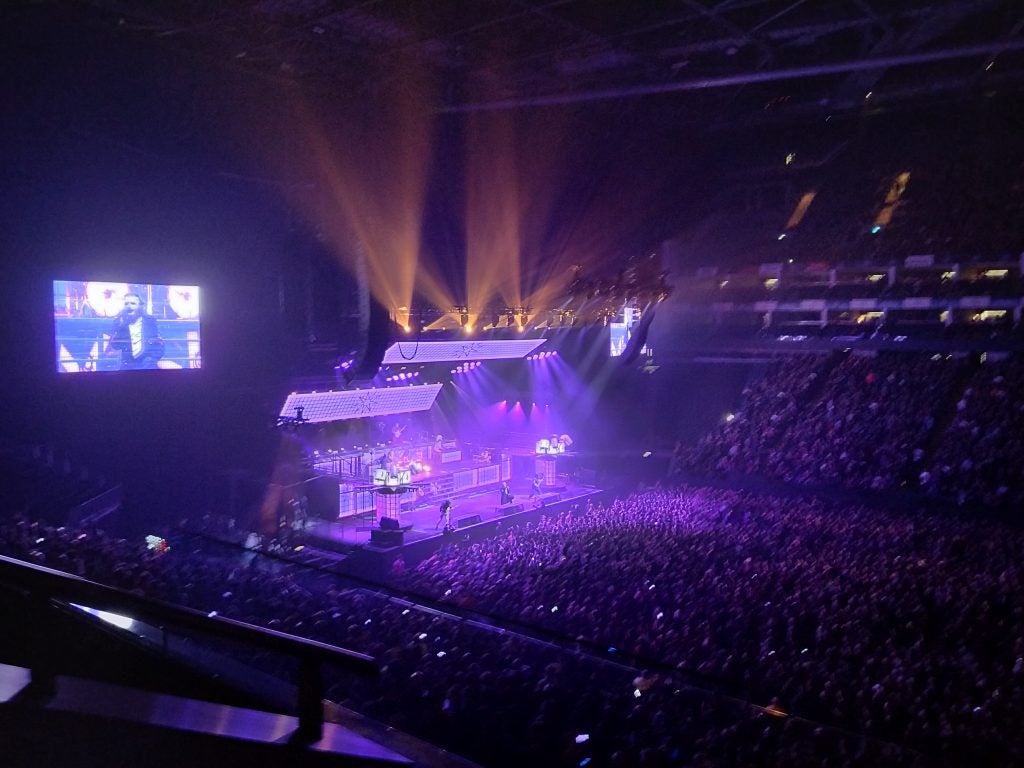
Night images are sometimes passable for a phone at the price, but you don’t get advanced low-light shooting

Without stage lighting to lean on, this shot is left with very poor detail

The ultra wide view…

…versus the standard one
The front camera is perfectly solid too. It has an 8-megapixel sensor and f/2 lens, and is capable of capturing fine facial detail, and tends to let in some fine grain noise rather than trading away such detail for a smooth look. There are several “beauty” features if you’d rather have flattering images for your social posts.
Video does not seem to be a focus of the Oppo A5 2020, though. You can shoot at 720p, 1080p of 4K, 30 frames per second. I’d advise sticking to 1080p most of the time as you lose stabilisation at 4K.
Annoyingly, the footage preview at 1080p doesn’t show the effects of the software stabilisation on the fly. You’ll only know how smooth your video will look by reviewing it after the fact. However, stabilisation effectiveness is fine.
Battery Life
The Oppo A5 2020 has a 5000mAh battery, among the largest seen in any phone of a conventional size and shape. Don’t underestimate how ultra-high capacity like this can change your relationship with your phone.
No more worrying about the charge level before you go for a night out. You can charge it every other day if you like. And on several days I have been left with around 50% charge by bed time.
On the last day of testing, by which time I had stopped needing to do any more specific testing, it has 63% at 11pm. After a particularly hard day that included three hours of data tethering to a laptop, it still had 35% left by bed time.
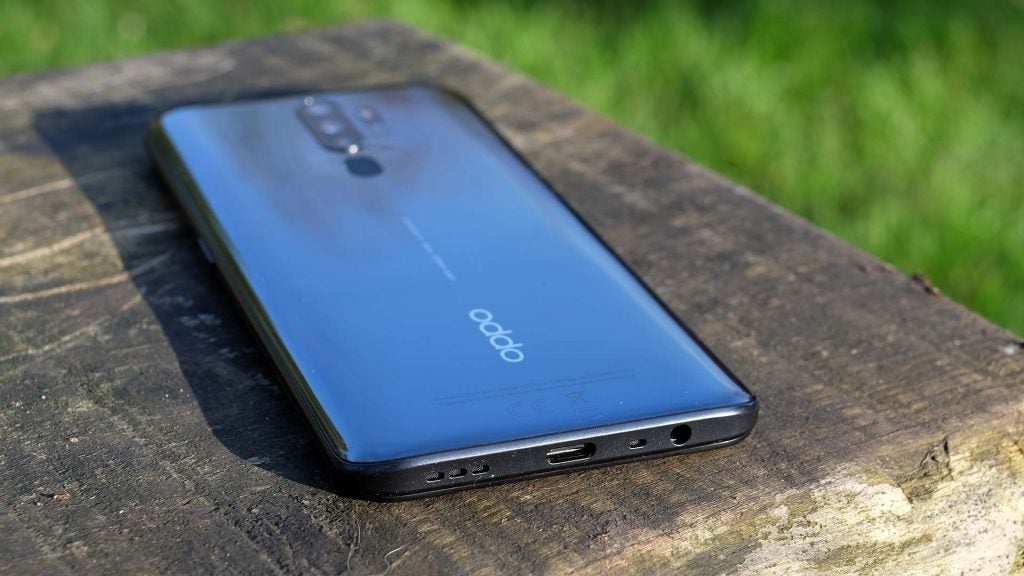
Some of you will be able to get the Oppo A5 2020 to last two full days. The way I use phones is a often bit too demanding for that result, but this phone still outlasts the vast majority of mobiles by a big margin, including just about all flagships bar the odd Huawei. And Huawei phones are no longer easy to recommend, having been severed from Google services.
Living with the Oppo A5 2020 is a joy. However, charging is slow. You get a standard 10W charger, and it is nowhere near the fast charge standard of getting you to 50-60% in half an hour. It was at 22% after 30 minutes, and 69% after 90.
This is a phone you may want to charge overnight. But not all of you will have to do so every night.
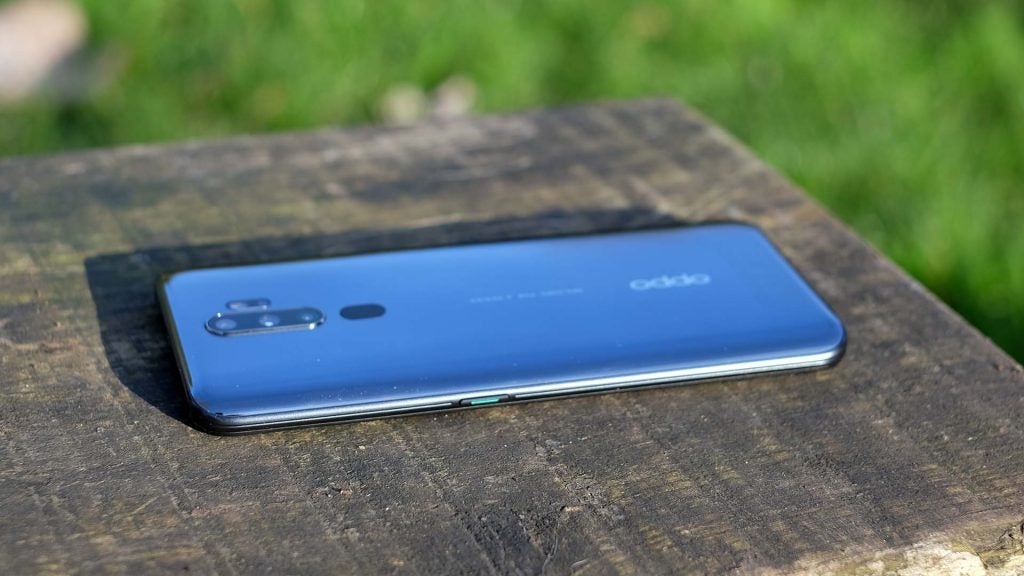
Should you buy the Oppo A5 2020?
The Oppo A5 2020 is a great budget Android that has some of the same appeals as the highly regarded Motorola Moto G line. Four rear cameras may catch the eye, but Oppo has not forgotten basics like speaker quality, everyday performance and battery life in favour of the attention-grabbing tech.
Its quad-camera array is not as good as you might imagine, offering performance functionally similar to a good budget dual camera layout. But to get something significant better you need to upgrade to the Google Pixel 3a XL, which is still far more expensive.
It’s a great affordable Android, but it’s a success because of the basics, not its quad-camera tech.
How we test phones
We test every mobile phone we review thoroughly. We use industry standard tests to compare features properly and we use the phone as our main device over the review period. We’ll always tell you what we find and we never, ever, accept money to review a product.


